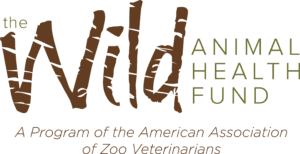Why Wetlands (And Their Inhabitants) Are Important

In the safety of marsh grass, a frog croaks in the dead of night. An alligator’s all-seeing eyes sit still above the murky water while the rest of his body is submerged below. Deer are grazing not far off on firmer soil and a lonely owl hangs among the cypress trees. In a small corner of the world where humanity has yet to touch, remains the wetlands that are rich with life.
Wetlands are covered by water with fertile soil and plants that thrive in aquatic habitats. The animals that call wetlands home are adapted to their environment and easily navigate this unique terrain. However, the beauty of wetlands has not been enough to save them from external threats. Water drainage, human development, and invasive species are just a few factors negatively affecting these habitats. It is possible that by 2100, 75% of coastal wetlands in the United States will disappear.
WHY DOES IT MATTER?
Wetlands act as filters for surrounding environments. They absorb nutrients, sediments, and pollution before reaching larger bodies of water. This also means they can slow floodwaters. Overall, they act as barriers between land, sea, and the forces of nature.
WHAT DOES THIS MEAN?
If wetlands are in danger, so are the animals that call them home. To save and protect our environment we have to start at the center of it all–animal health. The creatures that call wetlands home are essential to its balance. Thanks to these species, populations are managed and plants can flourish. And that’s just scratching the surface!
HOW ARE WE TRYING TO HELP WETLAND ANIMALS?
Much like our own furry friends, wildlife health needs to be monitored. The health of wildlife can tell us the state of their habitat, and warn others of potential harm. This is all the more critical in ever-changing environments like wetlands.
Accuracy and efficiency in testing are important. In 2022, we supported a project for more convenient testing measures for turtles and tortoises. The results of this study allowed veterinarians real-time information regarding chelonian stress levels. Instead of lengthy lab work, wildlife veterinarians could gather real-time data to better treat their patients right on-site.
Urbanization has been a major influence on wetlands. Animals that once lived in remote areas have had to accommodate human presence. The white ibis is one such creature that has had to adapt to these conditions. What began as a small-scale study has led to major government funding to support these species.
HOW CAN I HELP?
Wetlands don’t have to disappear as long as we play our part in preserving them. It’s a habitat that relies on the animals and plants to function. In turn, the creatures that call wetlands home rely on them to survive.
Animal health is at the heart of conservation. Even then, it’s the piece of the conservation puzzle that is often overlooked. Healthy animals lead to healthy habitats. The research that we conduct leads to big changes in zoo animals and wildlife well-being and their environments.
